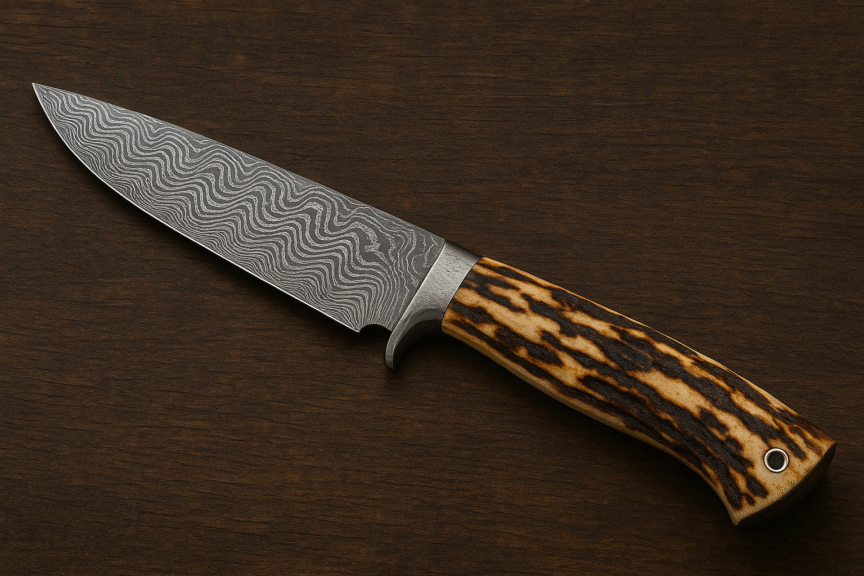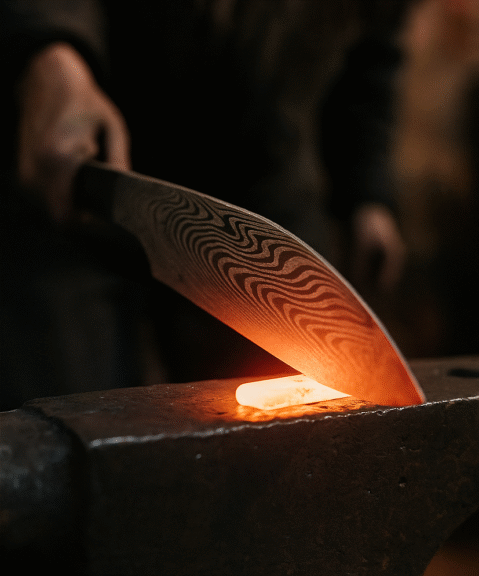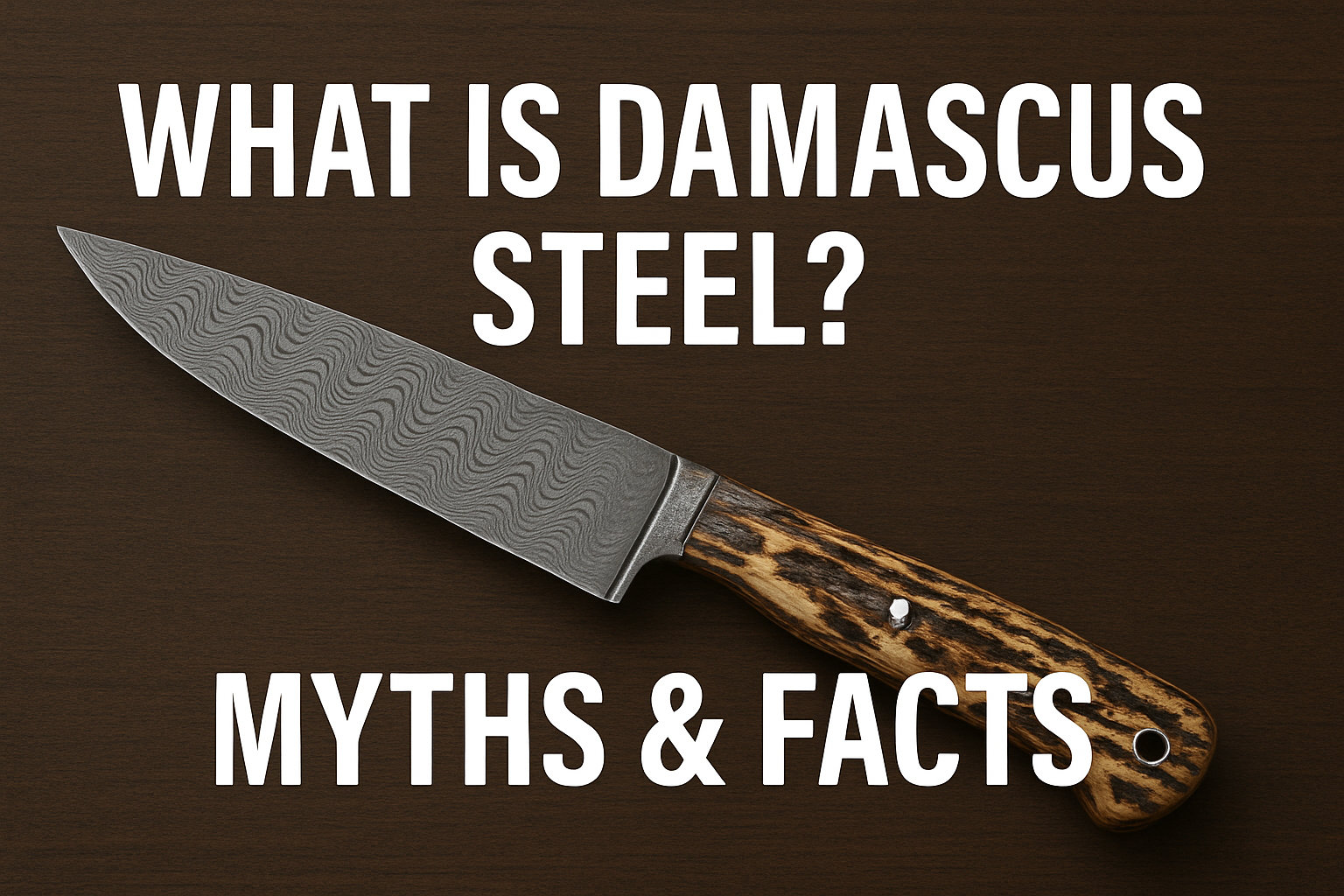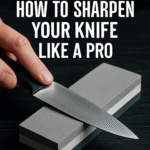Damascus steel is one of the most admired and mysterious materials in the world of knife making. Famed for its swirling patterns and legendary strength, it has captured the imagination of blacksmiths, historians, and knife enthusiasts for centuries. But what exactly is Damascus steel, and how much of its legend is rooted in truth? Let’s explore the history, process, and common myths surrounding this remarkable metal.
🔹 The Origins of Damascus Steel
The term “Damascus steel” historically refers to a type of steel used in the Middle East, especially for making swords, from around 300 to 1700 AD. The original Damascus steel was made from Wootz steel, a high-carbon steel first developed in India and Sri Lanka, and then traded through the Syrian city of Damascus, which likely gave it its name.
Wootz steel was known for its strength, ability to hold a sharp edge, and unique patterns that resembled flowing water or wood grain. Sadly, the exact method of producing true Wootz steel was lost around the 18th century.
🔨 What is Modern Damascus Steel?
Today’s Damascus steel isn’t made using Wootz steel, but it aims to recreate its beauty and performance. Modern Damascus is typically created by forge-welding multiple layers of steel together — often combining a hard steel for edge retention and a softer one for toughness.
Through a process of:
Stacking and welding
Folding and twisting
Etching with acid
…the blade develops the familiar rippled or swirled patterns, making each blade unique.

💬 Common Myths About Damascus Steel
Let’s clear up some popular misconceptions:
Myth 1: Damascus Steel Can Cut Through Anything
Fact: While Damascus steel is strong and sharp, it’s not invincible. It cannot cut through stone or other swords as legend suggests. This myth likely arose from medieval tales and exaggerations.
Myth 2: The Pattern Makes It Stronger
Fact: The patterns are a byproduct of the forging process and do not directly make the blade stronger. The performance depends more on the types of steel used and the quality of craftsmanship.
Myth 3: All Patterned Blades Are Real Damascus
Fact: Not all patterned knives are true Damascus. Some are laser-etched or acid-treated to mimic the look without the layered steel process. Genuine Damascus steel involves real forge-welding and pattern development.
Myth 4: Damascus Steel Doesn’t Rust
Fact: Modern Damascus is often made with high-carbon steels, which are prone to rust if not cared for. Regular cleaning and oiling are necessary to maintain its condition.

✅ Real Facts About Damascus Steel
Unique Patterns: No two Damascus blades are exactly alike due to the natural variation in forging.
Balanced Performance: Properly made Damascus knives offer a great blend of sharpness, durability, and flexibility.
Artisan Craft: Creating Damascus is a skilled art, making each piece not only a tool but a work of craftsmanship.
🧼 How to Care for Damascus Steel
To preserve the beauty and functionality of your Damascus blade:
Keep it dry after use
Oil regularly with food-safe or blade oil
Avoid harsh chemicals and prolonged moisture
Store safely, preferably in a dry place or sheathcient Damascus may be exaggerated, the modern versions still offer stunning beauty and excellent performance when crafted correctly.
Whether you’re a knife collector, chef, hunter, or enthusiast — owning a Damascus steel blade means carrying a piece of tradition and craftsmanship forged in fire and skill.

Damascus steel stands at the crossroads of myth, history, and metallurgy. While the romantic stories about ancient Damascus may be exaggerated, the modern versions still offer stunning beauty and excellent performance when crafted correctly.
Whether you’re a knife collector, chef, hunter, or enthusiast — owning a Damascus steel blade means carrying a piece of tradition and craftsmanship forged in fire and skill.





It’s impressive that you are getting thoughts from this piece of writing as well as from our argument made at this time.
So much value packed into one post!